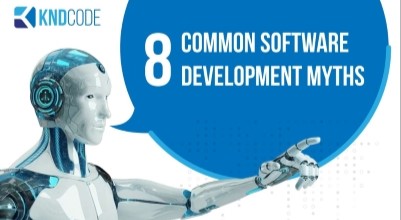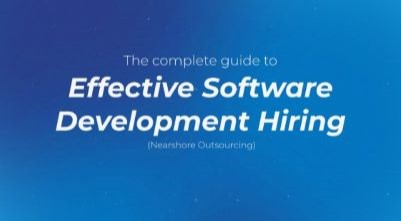Performance issues aren’t always easy to spot during the development and implementation stages. In fact, they rarely are. Instead, they usually arise over time and must be dealt with after the software is already up and running. An application that performs well at the beginning of its life will not necessarily be performing the same way several years down the road.
Monitoring your software for performance issues and optimizing it as needed is crucial if you want your software to provide the highest return on investment.
What Is Software Performance?
“Performance” isn’t a metric in itself that can be measured. However, we can rate performance by looking at a few metrics that indicate how optimally an application is running.
Responsiveness
The primary yardstick for software performance is responsiveness. In other words, we measure performance according to the amount of time it takes for an application to carry out a command after it has been entered by a user.
This is the most important performance metric because it is the most immediately noticeable. People love fast software. Not only that, they expect fast software. According to a 1993 publication, response times exceeding one second are enough to interrupt a user’s flow of thought—and that threshold is more likely to go down than up as technology improves and people become increasingly accustomed to instant response times.
Objectively speaking, faster response times indicate better performance. However, there is a subjective aspect at play here as well, which is how fast the software feels to the user. Actual response time and perceived response time are not always the same, so both should be taken into consideration. The width of the gap between objective response time and perceived response time depends mainly on the user’s expectations of the software and the context in which they are using it.
Usability
The next metric we can use to rate performance is usability. Usability is a measure of how efficiently a user can navigate a software application. This could be the number of steps that must be completed for a function to be performed or the amount of time it takes to complete a task from end to end. The important distinction between responsiveness and usability is that responsiveness measures the time it takes for the software to react to the user’s input, whereas usability is the amount of time it takes the user to complete a task within the software application.
Scalability
The third component of performance is scalability. A scalable software application can maintain the same performance quality even if the demands placed on it increase, usually due to the user base growing. If the software is not scalable, its performance quality will drop considerably after it passes a certain user-count threshold. Identifying this threshold as early as possible is the best way to be prepared for optimization when the number of users approaches the threshold.

Why Is Software Performance Important?
Optimizing software performance is hardly the most glamorous part of software development, but it’s an inevitable and necessary task nonetheless. Proactively monitoring performance issues and quickly addressing them when they arise ensures you get the most out of your investment. If you don’t take them seriously, they will only grow into more expensive problems.
Performance has a wider-reaching impact than you might think. Performance failures can be detrimental to employee productivity—without functional tools, they can’t do their jobs well. The hit to productivity can trickle down to affect other parts of the organization as well, potentially creating all sorts of problems such as lost revenue or decreased customer satisfaction.
Here’s a more detailed breakdown of some of the most significant ways software performance issues can affect an organization:
Damaged productivity: For many companies, the software they use is absolutely critical to the daily operation of the organization. A performance failure can cause productivity to slow or even grind to a halt, which can quickly derail company objectives.
Poor customer relations: When an organization is not functioning productively, it will likely struggle to maintain its standards of customer experience. This could sour relationships with customers, leading to defections, a deteriorated reputation, and lost revenue. If the software is customer-facing, it could cause even more damage by frustrating customers who are trying to do business with your organization.
Additional expenses: The longer a performance issue goes unaddressed, the more expensive it will become to fix. Catching performance issues early, while they are still minor, ensures software maintenance expenses remain as low as possible.
Project failure: A serious enough performance issue that wasn’t considered during development and wasn’t addressed when it emerged can cause the entire project to fail. When the problem becomes so large that it would be more expensive to fix it than to start over, you may have no choice except to scrap the project completely. It goes without saying that this is a costly worst-case scenario.
This list of consequences clearly indicates that performance optimization cannot be overlooked—it is a non-negotiable part of a software application’s life cycle.
What Causes Software Performance Issues?
Performance issues are usually a result of fundamental architectural problems. This means that while the issues are unlikely to emerge until later, you can predict them before the software is implemented. It’s easy to adopt a “get it done now, fix it later” attitude, but failing to consider potential performance issues up front is a mistake. If you don’t plan for ongoing performance optimization, you will only exacerbate the problem.
Many people believe that software performance cannot be measured until it has been in use for a while and generated quantifiable metrics. While it is true that such metrics can be a great help in monitoring the performance of a software application, you can also predict how well the software will perform while the project is still in its early stages by using a performance model.
Another common mistake that can lead to performance issues is putting off optimization, or neglecting it entirely, due to the belief that it is more expensive than it is worth. The truth is that optimizing the software as problems emerge is far less expensive than ignoring them. Even a simple, inexpensive performance model can predict problems that could occur down the road and save you from a more expensive dilemma.
Sometimes, performance issues are caused when a project manager decides that performance management is too time-consuming. On the contrary, using a performance model early in the project can save time later. Just as a performance problem will only get more expensive the longer you ignore it, it will also become more time-consuming to fix. You should make performance management and optimization a top priority from the very beginning of the project.
How to Identify Software Performance Issues
Performance issues can be predicted early on with performance modeling, but once the software is implemented, you can begin monitoring its performance with actual metrics.
Software performance analysis is an ongoing process that can give you a picture of how well a software application is performing day-to-day. Simply conducting an analysis every once in a while is better than nothing, but it won’t alert you to problems in a timely manner. For example, if you only analyze your software’s performance a couple of times per year, a problem could still go unnoticed or unaddressed for months in between performance checks. Maintaining ongoing performance analysis allows you to catch problems immediately and resolve them as quickly and inexpensively as possible.
Monitoring performance constantly might sound like a tall order, but you can save yourself time and effort by using an automatic performance monitoring tool that can give you real-time feedback regarding important performance metrics and alert you immediately if a major issue arises. This allows ample warning when a threshold is crossed or a potential problem is detected, enabling you to react quickly and make the necessary optimizations before the situation becomes dire. You could also simplify things further by having KNDCODE handle your performance monitoring for you.
How to Solve Software Performance Issues
Performance issues can be a real burden when they happen, but luckily there are steps you can take to minimize the risk posed by performance failures.
• Plan ahead for optimization. Treating optimization as an integral component of a software application’s full life cycle ensures that you are prepared for performance issues when they inevitably occur. We know that all software ages and eventually fails, so why not plan for this eventuality ahead of time? Performance management should be built into your project’s blueprint, not tacked on later.
• Prioritize the user. Whoever the end-user is in your situation—whether it’s customers, employees, or both—should be the perspective you care the most about.
Nearshore Software Company Optimization
It can often be difficult to determine the exact scope of a performance issue and the best method of addressing it. Enlisting a team of experts to assist you with software optimization is a way to protect your investment by ensuring you are not putting more time, effort, or money towards performance optimization than is necessary. KNDCODE’s team is ready and eager to provide the nearshore software services you need, including performance optimization for legacy systems and performance management for existing systems.
KNDCODE. Always ahead, forward, near.
Ebooks
KNDCODE'S eBooks your gateway to knowledge and expertise in software development. Our curated collection of insightful and practical eBooks covers a wide range of topics, helping you enhance your skills and unlock your full potential. Our free eBooks provide valuable insights, best practices, and real-world solutions to empower your career in the ever-changing world of software development.

Software Development Myths
Here are 8 common software myths and the truth behind each of them.
Read more
Nearshore vs Offshore SD
Nearshore vs Offshore Software Development. What's the difference?
Read more
Hiring Guide (Dev)
Have access to the complete guide to effective Software Development hiring
Read more
KNDCODE Credentials
Solutions to the most complex operational challenges.Learn more about our capabilities.
Read more





